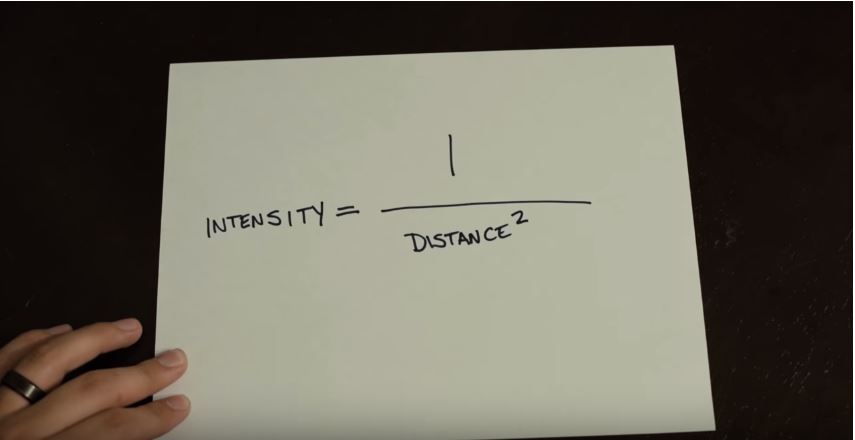Last Updated on 08/25/2019 by Joy Celine Asto
Whether you work extensively with flash and studio lighting, or have a preference for natural and outdoor light, understanding the quality of light when you shoot is crucial to getting well-exposed photos. To our rescue comes the Inverse Square Law of Light, which sounds very intimidating but is actually one of the photometry concepts that largely governs our work as photographers.
Ohio-based Matt Day has found that whenever people hear of the Inverse Square Law of Light, they are immediately turned off because of the seemingly complicated math involved. That’s an obvious reaction, since we’re here to take photos and not solve equations, right? But as Matt explains in his video below, understanding this concept is very helpful for photographers since it tackles one of the fundamentals of good photography: working with light.
https://www.youtube.com/watch?v=OnyI88iDw_c
If you also happen to appreciate math, Matt throws in the equation for this concept:
Intensity of Light = 1 / Distance²
To demonstrate how this equation works, Matt placed a light source and marked his wall in foot increments all the way to five feet. As you move your subject further away from the light source, you get less light — something that we already see. However, what we don’t really notice is how the light drastically falls off when you move your subject just two feet away from the light source, but there’s not much difference as you move farther away.
This principle is at work when you position your subject closer to the light source and farther from the background. As Matt showed in a quick portrait shoot, you can create the effect of a darker background out of a white wall by simply shooting your subject this way. Matt also explains that aside from portrait work, this principle is also helpful when photographing groups of people. If you put someone within a foot from the light source, closer than everyone else, then the rest won’t be lit evenly and will appear underexposed. So, what you want to do is to move everyone farther away from the light source where they can be lit evenly. This applies both to flash and natural light.
Interested in other tips and tricks from Matt Day? Visit his YouTube channel to watch his other tutorials.
Screenshot image taken from the video by Matt Day


